Avila is a lovely Spanish city, the capital of the autonomous community of Castilla-Leon. Surrounded by the hills of the Sierra Gredos, it lies at around 1100 meters above sea level.
The town is well known for its medieval walls, built in the 11th century by the Christian kings to defend the city from the Moors. In addition, Avila offers faith, history, and architecture to give a fantastic insight into Spain’s historic past. Here is our list of the top 9 best monuments to discover in Avila, Spain.
1-Avila Walls :
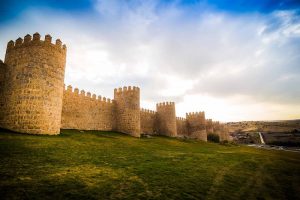 via – kevmrc
via – kevmrc
The walls of Avila are one of the most well-preserved examples of medieval fortifications in Europe. After the conquest of Avila from the Moors in the 11th century, Christian King Alfonso VI authorized the construction of this defensive wall.
Moreover, the imposing stone wall encircles the historic old town for 2.5 km. The wall features some 88 semicircular defense towers, with an average height of 12 meters and an average depth of 3 meters. Today, the moat no longer exists. The Avila fortification, which included a moat in its defensive system, took almost ten years to build.
The wall contains nine gates giving access to the old walled city. Besides, the most impressive are the Porte de Saint-Vincent and the Porte de la Forteresse. These gates feature twin 20-metre-high towers linked by semicircular arches.
2- Walking on the top of the walls:
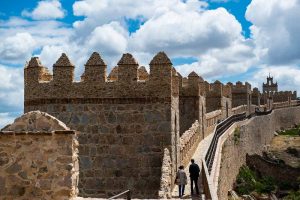 via – travelpast50
via – travelpast50
The ramparts are spectacular from the ground and just as magical from the top. you can buy a ticket for €5, which allows you to access a 1700m long crenellated walk on the top of the walls, near the Porte Saint-Vincent.
This walkway affords a breathtaking view of the city. On the one hand, Avila Cathedral is built straight into the wall. On the opposite side, a line of towers extends into the distance. Apart from this visitors can enjoy the stunning views from the corner tower of the Romanesque Basilica de San Vicente.
3- Basilica of St Vincent:
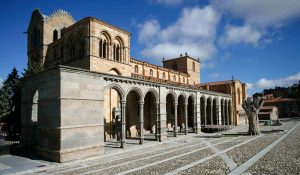 via –avilaturismo
via –avilaturismo
The Basilica of San Vicente located outside the city walls, beyond the Puerta de San Vicente. St. Vincent is thought to have suffered martyrdom here in 300 A.D. Besides, the Nave, Apses and Transepts built in the early 12th century, and the remaining ccompleted in the 14th century.
Again the church entered through a large Gothic portal framed by two towers. Inside are the Chapel of the Orejones, with an engraving dating from 1321, and its twin, the Chapel of the Palomeques. Access to the towers is just inside the second entrance. The most spectacular feature of the mid-13th century is the Gothic cimborri (dome).
The basilica features a range of architectural styles, including a baroque altar and a nave combining Romanesque and Gothic elements. In addition, the church is open to the public, and admission is subject to a fee.
4- Convento de Santa Teresa de Jesús:
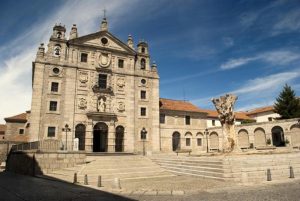 via – lavanguardia
via – lavanguardia
The Convento de Santa Teresa de Jesús stands on the site of Santa Teresa’s birthplace, opposite the Puerta de La Santa. It was designed as a convent for Carmelite nuns and inaugurated in 1636 by the architect Fray Alonso de San José.
The Iglesia de Santa Teresa has a relatively simple Baroque façade with a statue of Santa Teresa above the entrance. The interior’s main feature is the Capilla Natal, which is the room where Santa Teresa was born. It is a richly decorated chapel. The altar contains a magnificent statue of Santa Teresa, made by Gregorio Fernández, that represents the moment when she saw the cross.
Tourists can visit the Iglesia de Santa Teresa, open all year except Mondays in the low season, and the Museo de Santa Teresa, open from April to October, which educates visitors about the life, work, and spiritual message of Santa Teresa.
5- Real Monasterio de Santo Tomás:
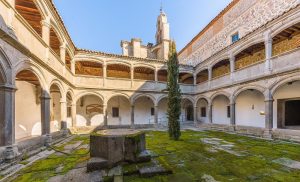 via – monasteriosantotomas
via – monasteriosantotomas
The Dominican Monastery of Santo Tomás, situated on the outskirts of the city walls, in a quiet and peaceful setting. It was founded in 1483 by María Dávila and Tomás de Torquemada, the first Grand Inquisitor of Spain, with a donation from the Catholic Monarchs Ferdinand and Isabella. The convent also used as a summer palace by the Catholic Monarchs.
The façade of the church is simple, the interior is sober, except for the high altar and the choir with rich carved stalls. There is a beautiful retable by Pedro de Berruguete depicting scenes from the life of St. Thomas Aquinas on the high altar. The choir was where the courts of the Inquisition took place. The Catholic Monarchs attended mass there.
Despite its history, the monastery is a peaceful place with three beautiful cloisters: the simple Novice Cloister, the Silence Cloister with steps that lead to the choir, and the Royal Cloister, which has two floors.
6- Catedral de San Salvador:
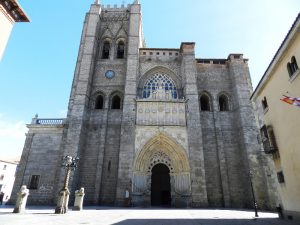 via – micamara
via – micamara
The oldest Gothic Cathedral in Spain is one of the most impressive attractions in Avila. The church built in Romanesque style in 1091 and completed in the Gothic style until the 14th century. The church has a fortress-like appearance due to its massive granite structure that integrate into the old city walls.
The Puerta de los Apóstoles (Apostles’ Door) on the northern façade is one of the most remarkable features of the church, with figural decoration dating from the 15th century. Inside, the red-and-white granite stonework from the first phase of construction is also noteworthy.
In addition, there are stained glass windows from the 15th century in the transepts and richly carved choir stalls with reliefs in the Plateresque style. The Capilla Mayor (Main Chapel) houses an impressive altarpiece by Vasco de la Zarza and famous paintings by Pedro Berruguete and Juan de Borgoña.
The Cathedral has several notable attractions. The Capilla de San Antolín is also noteworthy for its magnificent retablo. In the sacristy, there is a group of alabaster sculptures by Isidro Villoldo and Pedro de Salamanca. The Cathedral Museum is also worth a visit. It housed in the former Cardinal’s Chapel. The collection comprises a remarkable Romanesque altarpiece and El Greco’s Portrait of Garcibáñez de Múxica.
7- Mirador de los Cuatro Postes:
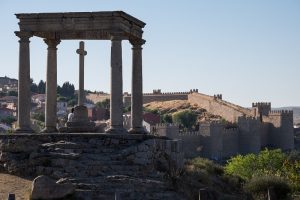 via – avilaturismo
via – avilaturismo
The Cuatro Postes is a monument of four Doric columns, each five meters high, that frame a large cross made of granite. It built at the end of the 16th century as a resting place for pilgrims visiting the hermitage of San Leonardo, where Santa Teresa de Jesus rested.
From this popular viewpoint, tourists can enjoy a panoramic view of Ávila and its historic walls, especially at night when the walls and monuments illuminated.
8- Museo de Ávila:
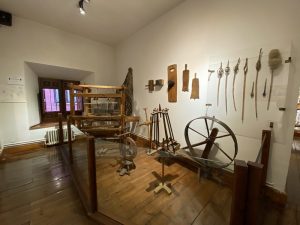 via – frugocio
via – frugocio
The Ávila Museum dedicates a significant part of its exhibits to provincial history. These exhibits cover different historic periods, from the Palaeolithic, Bronze, and Iron Ages to recorded history, from Romanization to the 19th century. The exhibits display examples of artifacts recovered from sites all over the province.
The museum has other areas dedicated to the traditional culture of rural Ávila. These areas include art, crafts, social aspects, and traditions. The upper part of the museum devoted to archaeological remains found within the city walls.
The main collections are housed in the 16th-century Renaissance palace known as Deanes House because it was once the home of the Deans of Ávila Cathedral.
The museum stores significant collections in the Visitors’ Warehouse located in the 12th-century church of Santo Tomé el Viejo. Visitors can view these collections during their visit.
9- Monasterio Nuestra Señora de Gracia:
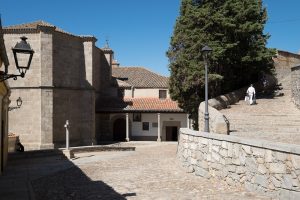 via – avilaturismo
via – avilaturismo
Lady María Mencía de San Agustín founded the convent of Nuestra Señora de Gracia in the 16th century. Also it located in the former Royal Palace of Don Juan II, where Queen Isabel the Catholic was also born (Casa Natal de Isabel la Católica). Besides, visitors can access the monastery through the Plaza del Cristo, which leads to an exquisite Gothic cloister.
The cloister, dates back to 1406, has two floors with arches and is a peaceful area that surrounds a small garden and provides access to other parts of the monastery, including the church, which used to be the Royal Chapel of the Palace. In addition, it built in the Gothic style during the Renaissance. The sanctuary was later embellished with Baroque details in the plasterwork. On the main altar there is a Renaissance reredos by Juan Rodríguez and Lucas Giraldo.

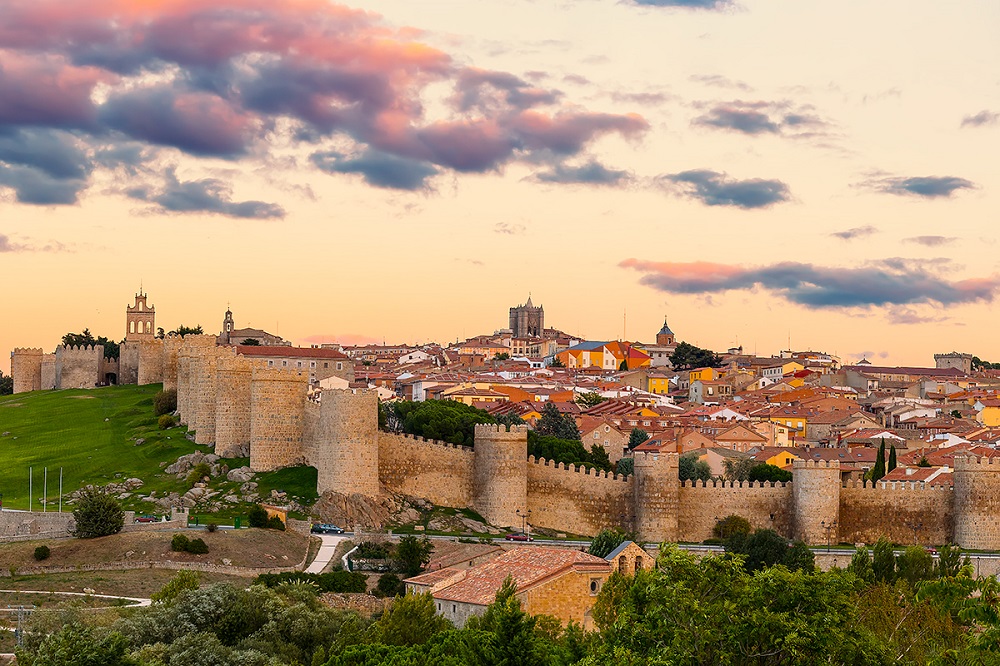
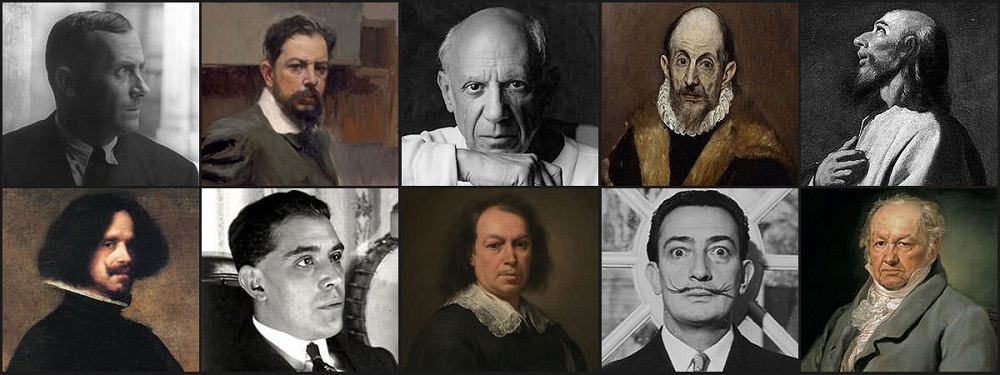 Top 10 Most Famous Spanish Artists and their Arts
Top 10 Most Famous Spanish Artists and their Arts
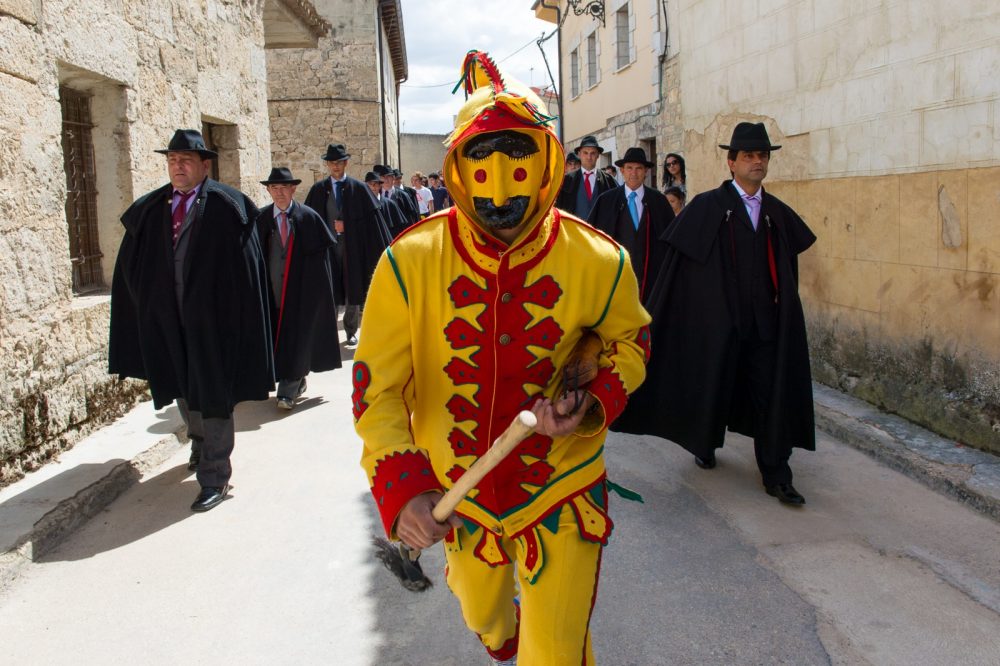 El Colacho, the Baby Jumping Festival in Murcia Spain
El Colacho, the Baby Jumping Festival in Murcia Spain
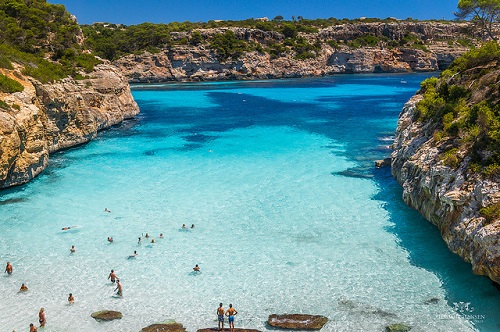 Discover The Most Beautiful Places In Mallorca, Spain
Discover The Most Beautiful Places In Mallorca, Spain